 W
WThe Seicento is Italian history and culture during the 17th century. The Seicento saw the end of the Renaissance movement in Italy and the beginning of the Counter-Reformation and the Baroque era. The word seicento means "six hundred" and is short for milleseicento, 1600.
 W
WGiovan Battista Aleotti was an Italian architect.
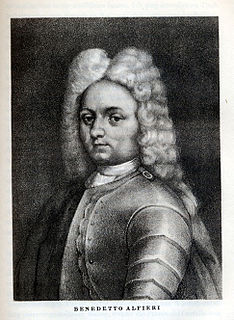 W
WBenedetto Innocenzo Alfieri was an Italian architect, a representative of the late-Baroque or Rococo style.
 W
WLuigi Baccio del Bianco or Baccio del Bianco was an Italian architect, engineer, scenic designer and painter.
 W
WFranz (Ignaz) Anton Bagnato,, also known as Francesco Antonio Bagnato, was the son of architect Johann Caspar Bagnato. Franz Anton Bagnato was born in Altshausen. Like his father he was an architect active during the Baroque period. Bagnato is mostly remembered for his works in the service of the Teutonic Knights and the Prince-Bishop of Constance.
 W
WFilippo Barigioni (1690–1753) was an Italian sculptor and architect working in the Late Baroque tradition.
 W
WGiovanni Maria Bernardoni (1541–1605) was a Jesuit and an Italian architect who was the first to design the Baroque style in Poland and the Grand Duchy of Lithuania.
 W
WGian Lorenzo Bernini was an Italian sculptor and architect. While a major figure in the world of architecture, he was, also and even more prominently, the leading sculptor of his age, credited with creating the Baroque style of sculpture. As one scholar has commented, "What Shakespeare is to drama, Bernini may be to sculpture: the first pan-European sculptor whose name is instantaneously identifiable with a particular manner and vision, and whose influence was inordinately powerful...." In addition, he was a painter and a man of the theater: he wrote, directed and acted in plays, for which he designed stage sets and theatrical machinery. He produced designs as well for a wide variety of decorative art objects including lamps, tables, mirrors, and even coaches.
 W
WBartolomeo Bianco was an Italian architect of the early Baroque.
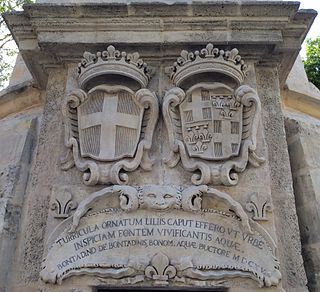 W
WVittorio Bontadini, better known as Bontadino de Bontadini, was a Bolognese hydraulic engineer, architect, mathematician and wood carver. He is mostly known for designing the Wignacourt Aqueduct in Malta.
 W
WFrancesco Borromini, byname of Francesco Castelli, was an Italian architect born in the modern Swiss canton of Ticino who, with his contemporaries Gian Lorenzo Bernini and Pietro da Cortona, was a leading figure in the emergence of Roman Baroque architecture.
 W
WGaetano Chiaveri was an Italian architect and master builder, most notable for his work as part of the second phase of the Dresden Baroque. His works include the Cathedral in Dresden and a new wing of the Royal Castle in Warsaw. In the Russian Empire, he oversaw the construction of the Kadriorg Palace to Nicola Michetti's designs.
 W
WFrancesco Contin was a Swiss-Italian sculptor and architect.
 W
WPietro da Cortona was an Italian Baroque painter and architect. Along with his contemporaries and rivals Gian Lorenzo Bernini and Francesco Borromini, he was one of the key figures in the emergence of Roman Baroque architecture. He was also an important designer of interior decorations.
 W
WGiovanni Battista Crescenzi (1577–1635) was an Italian painter and architect of the early-Baroque period, active in Rome and Spain, where he helped decorate the pantheon of the Spanish kings at El Escorial.
 W
WAntoine Dérizet, of Lyon, was an experimentally classicizing French Late Baroque architect who spent much of his career in Rome, where he designed the churches of Church of SS. Claudius and Andrew of the Burgundian (1729?), where he experimented with reviving the High Renaissance central planning of a Greek cross surmounted by a central dome, and, facing Trajan's Forum, Santissimo Nome di Maria (1736–38), which is elliptical in plan, with radiating chapels. He also provided designs for the marble revetment and stuccoes added to the interior of San Luigi dei Francesi (1759–64).
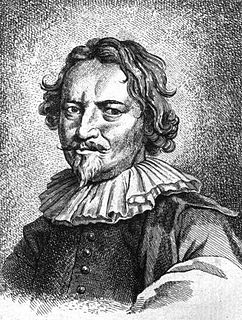 W
WCarlo Fontana was an Italian architect originating from today's Canton Ticino, who was in part responsible for the classicizing direction taken by Late Baroque Roman architecture.
 W
WGiovanni Maria Fontana was an Italian-Swiss architect, born in Lugano, who worked in Russia.
 W
WGiulio Cesare Fontana was an Italian architect and engineer, mainly active in Naples and its surroundings.
 W
WJakub Fontana was a Polish architect of Swiss Italian origin, a practitioner of the Baroque and Neoclassical styles. He was court architect to the Polish king. He was knighted in 1764. Jakub Fontana had a notable brother named Jan Kanty Fontana. His projects were influenced by Saxon Baroque, French Rococo and early Neoclassicism.
 W
WRosario Gagliardi (1698–1762) was an Italian architect born in Syracuse. He was one of the leading architects working in the Sicilian Baroque. In spite of never leaving Sicily his work showed great understanding of the style, but was a progression from the style of baroque as deployed by Bernini. He worked mostly in the Sicilian Baroque beginning with the cathedral at Modica in 1702.
 W
WGiovanni Battista Gisleni was an Italian Baroque architect, stage designer, theater director, singer, and musician at the Polish-Lithuanian royal court.
 W
WStefano Ittar was a Polish-Italian architect.
 W
WLeopoldo Mattia Retti, also known as Leopold Retty was an Italian architect working in Southern Germany. He is considered one of the leading representatives of late French Baroque. In Ansbach and in Mögeldorf there is a street named after Retti.
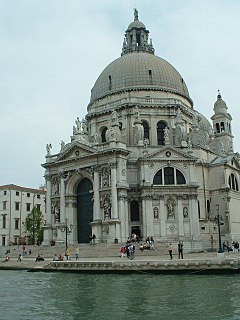 W
WBaldassare Longhena was an Italian architect, who worked mainly in Venice, where he was one of the greatest exponents of Baroque architecture of the period.
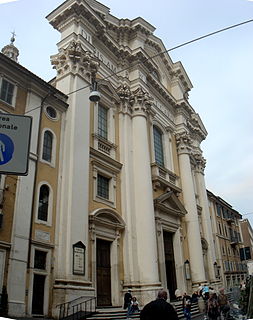 W
W.
 W
WOnorio Longhi (1568–1619) was an Italian architect, the father of Martino Longhi the Younger and the son of Martino Longhi the Elder.
 W
WBernardino Maccarucci was an Italian architect, active in his native Venice.
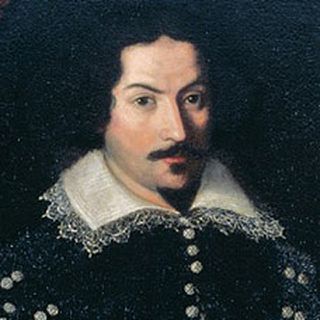 W
WCarlo Maderno (Maderna) was an Italian architect, born in today's Ticino, who is remembered as one of the fathers of Baroque architecture. His façades of Santa Susanna, St. Peter's Basilica and Sant'Andrea della Valle were of key importance in the evolution of the Italian Baroque. He is often referred to as the brother of sculptor Stefano Maderno, but this is not universally agreed upon.
 W
WFabio Mangone (1587–1629) was an Italian architect.
 W
WCarlo Giuseppe Merlo was an Italian architect of the late-Baroque period; born in Milan, Italy. He was a pupil of Francesco Bianchi, and from 1708 to 1716 trained in the College of Engineers and Architects in Milan. In 1716, he designed the Oratory for the church of San Bernardino, Milan. In 1731, he designed the main altar for the Sanctuary of the ‘’Beata Vergine di Caravaggio’’. In 1740, he designed the Oratory of the Immacolata in ponte Vecchio di Magenta. Like most architects of Milan, he contributed to the continuing work for the Duomo. In 1738, he designed and directed the construction of the entryway stairs for Palazzo Litta in Milan.
 W
WNicola Michetti, also known as Niccolo or Niccolò was an Italian architect, active in a late-Baroque style in mostly Rome, Italy and St Petersburg, Russia.
 W
WGiovanni Battista Nauclerio was an Italian architect and engineer, active in Naples, Italy.
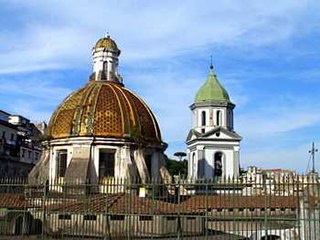 W
WGiuseppe Nuvolo was an Italian architect, an exponent of the Mannerist and early Baroque architecture, active mostly in Naples.
 W
WGiovanni Pietro Perti or Peretti was an Italian Baroque sculptor and architect, regarded as one of the leading European sculptors on the verge of the 18th century. He has been an elder of Šnipiškės and Antakalnis suburbs governed by Sapiehas.
 W
WFrancesco Antonio Picchiatti was an Italian architect of the Baroque period active in Naples. He is also called Picchetto. He was son of Bartolommeo Picchiatti, who also served as an architect in Naples.
 W
WPompeo Ferrari was an Italian architect, known as the best Baroque artist of Greater Poland.
 W
WPaolo Posi was an Italian architect of the late-Baroque period. Among the cities in which he was active were Rome, Narni, and Viterbo. Among the other works, he designed mausoleums for Cardinal Inico Caracciolo in Aversa, Cardinal Giuseppe Renato Imperiali in the church of Sant'Agostino in Rome, for cardinal Carafa in Sant'Andrea delle Fratte (1759), and for princess Maria Flaminia Chigi-Odescalchi (1771) in the church of Santa Maria del Popolo.
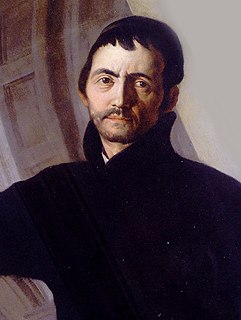 W
WAndrea Pozzo was an Italian Jesuit brother, Baroque painter and architect, decorator, stage designer, and art theoretician.
 W
WFilippo Raguzzini was an Italian architect best known for a range of buildings constructed during the reign of Benedict XIII.
 W
WCarlo Rainaldi was an Italian architect of the Baroque period.
 W
WFrancesco Bartolomeo Rastrelli was an Italian architect who worked mainly in Russia. He developed an easily recognizable style of Late Baroque, both sumptuous and majestic. His major works, including the Winter Palace in Saint Petersburg and the Catherine Palace in Tsarskoye Selo, are famed for extravagant luxury and opulence of decoration.
 W
WFrancesco Maria Richini was an Italian Baroque architect.
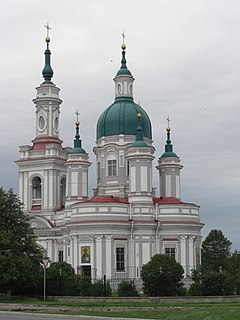 W
WAntonio Rinaldi was an Italian architect, trained by Luigi Vanvitelli, who worked mainly in Russia.
 W
WDomenico Egidio Rossi was an Italian architect and master builder, most notable for his design of the Schloss Rastatt.
 W
WMattia de Rossi was an Italian architect of the Baroque period, active mainly in Rome and surrounding towns.
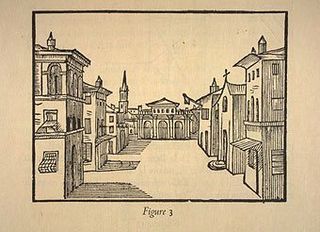 W
WNicola Sabbatini, also known as Niccolò Sabbatini or Nicola Sabbattini, was an Italian architect of the Baroque.
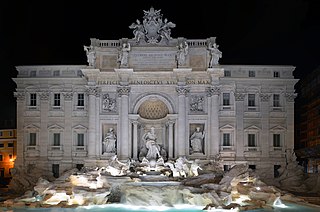 W
WNicola Salvi or Niccolò Salvi was an Italian architect; among his few projects completed is the famous Trevi fountain in Rome, Italy.
 W
WFerdinando Sanfelice was an Italian late Baroque architect and painter.
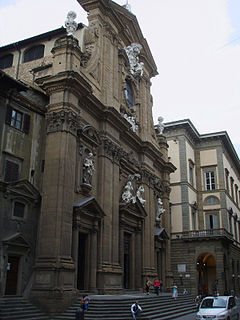 W
WGherardo Silvani (1579–1675) was an Italian architect and sculptor, active mainly in Florence and other sites in Tuscany during the Baroque period.
 W
WGiovanni Battista Soria was an Italian architect who lived and worked mostly in Rome.
 W
WAndrea Tirali was an Italian architect working in Venice and the Veneto. He was responsible for the intricate design of the pavement in the Piazza San Marco in Venice.
 W
WDomenico Trezzini was a Swiss architect who elaborated the Petrine Baroque style of Russian architecture.
 W
WGabriele Valvassori was an Italian architect of the late-Baroque period, mainly active in his native city of Rome.
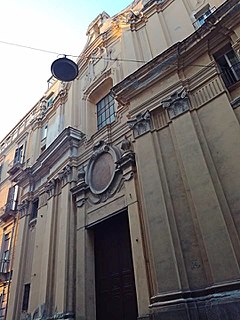 W
WBartolomeo Vecchione is a late 18th-century Italian architect of the late-Baroque or Rococo period, active in and around Naples.
 W
WGiacomo Barozzi da Vignola, often simply called Vignola, was one of the great Italian architects of 16th century Mannerism. His two great masterpieces are the Villa Farnese at Caprarola and the Jesuits' Church of the Gesù in Rome. The three architects who spread the Italian Renaissance style throughout Western Europe are Vignola, Serlio and Palladio.
 W
WBernardo Antonio Vittone was an Italian architect and writer. He was one of the three most important Baroque architects active in the Piedmont region of Northern Italy; the other two were Filippo Juvarra and Guarino Guarini. The youngest of the three, Vittone was the only one who was born in the Piedmont. He achieved a synthesis of the spatial inventiveness of Juvarra and the engineering ingenuity of Guarini, particularly in the design of his churches, the buildings for which he is best known.